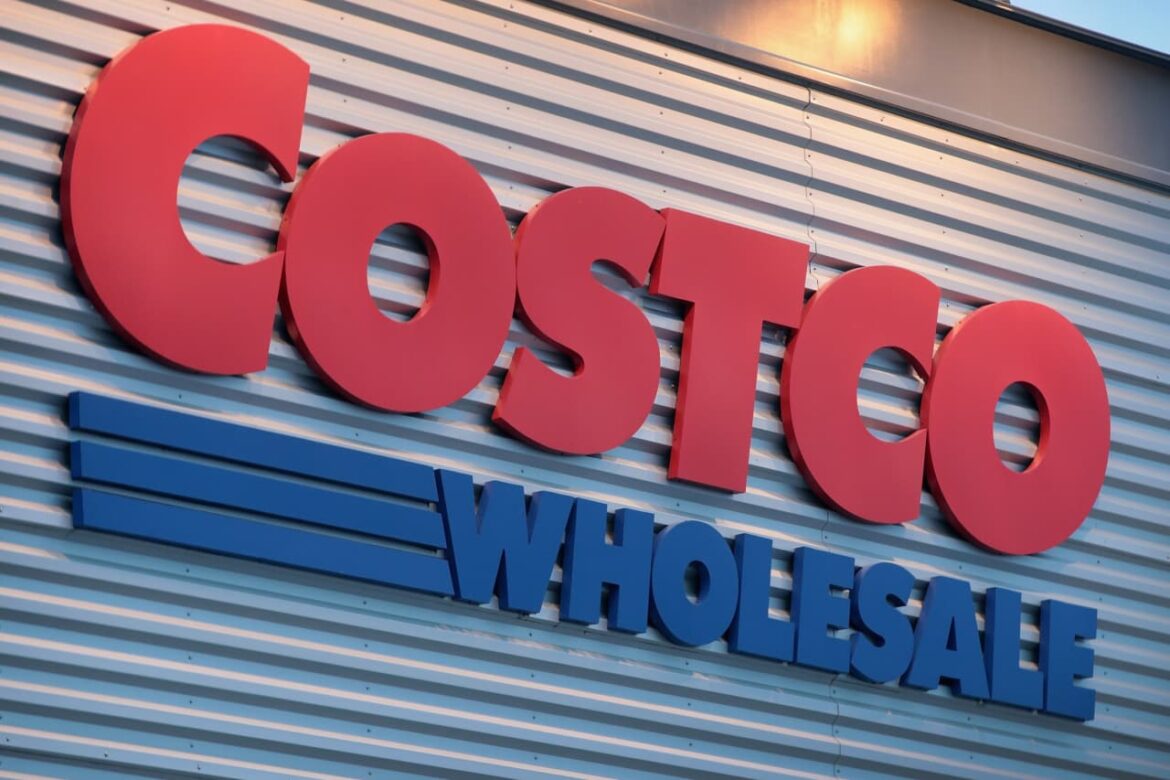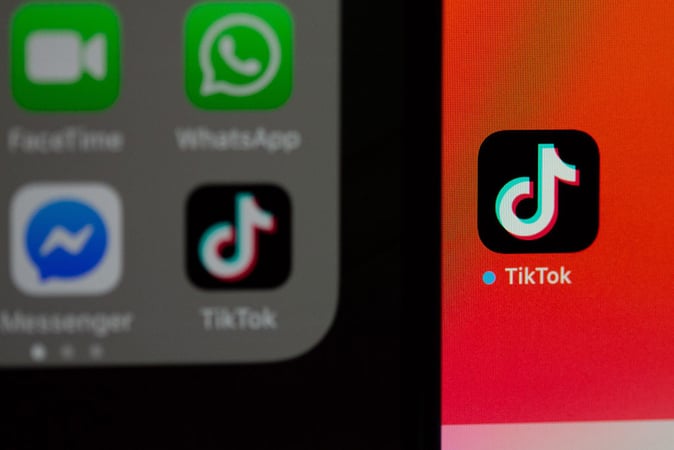
Costco saw a 9.4% sales boost the five weeks through April 7, driven by a surge in e-commerce activity. .
Source link
ECommerce
This Is Amazon’s Fastest-Growing Business by Far — and It Isn’t E-Commerce or Cloud Services
Pretty much all you have to know about Amazon‘s (AMZN 0.07%) fourth-quarter results is that the stock jumped close to 10% after they were announced. Yes, the Q4 results were that good.
Lower costs boosted profits for the company’s online shopping platform. Revenue for Amazon Web Services (AWS) vaulted 13% higher year over year. But as great as the news was for these units, there was an even better story: Amazon’s fastest-growing business, by far, isn’t e-commerce or cloud services.
Adding things up
Amazon CEO Andy Jassy said in the company’s Q4 earnings conference call that advertising revenue soared 26% year over year. That’s roughly double the growth rate for the company’s overall North America segment and AWS segment net sales. It’s also well ahead of the international segment’s year-over-year sales growth of nearly 17%.
CFO Brian Olsavsky noted that the impressive growth in advertising revenue was largely the result of sponsored products, where advertisers can run ads on Amazon’s e-commerce platform that promote their products. They can choose the keywords they want to target or allow Amazon’s systems to target keywords automatically.
Olsavsky said that Amazon’s “teams worked hard to increase the relevancy of the ads we show customers by leveraging machine learning.” He added that the company continues to improve the tools that enable advertisers to measure the return on investment for their advertising spending.
More to come
The trend of advertising revenue growth should continue, according to Olsavsky. And there are reasons to expect that the growth will accelerate.
Amazon recently began selling ads on its Prime Video streaming service. Customers can opt out of the ads by paying extra each month. All of the revenue generated by Prime Video advertising came after the end of the company’s fourth quarter.
Streaming advertising, in general, is a top priority for Amazon. Olsavsky stated that the company is exploring ways to boost advertising not only on Prime Video, but also on Fire TV, FreeVee, and live-streaming service Twitch.
Amazon is also working hard to make it easy for advertisers to spend their money on its platforms. For example, Jassy mentioned that the company is creating tools that enable advertisers to upload a picture with generative AI creating advertising copy based on the picture, and vice versa.
Extra benefits for Amazon
Advertising on Prime Video could also provide extra benefits for Amazon. Jassy said in the Q4 call, “We have increasing conviction that Prime Video can be a large and profitable business on its own.” Ad revenue could help make this scenario a reality.
Amazon’s profitability is already increasing nicely. In Q4, the company’s earnings skyrocketed to $10.6 billion from $0.3 billion in the prior-year period. Jassy’s vision of Prime Video becoming profitable would help even more.
But there’s another angle for Amazon here, too. Jassy stated that ads on Prime Video will enable the company to “continue investing meaningfully in content over time.” New compelling content could attract more subscribers to Amazon Prime.
That’s a big deal for Amazon. Bank of America analysts once estimated that Prime members spend close to four times more than non-Prime shoppers.
Should you buy Amazon stock because of advertising?
I don’t think that Amazon’s fast-growing advertising business is the main reason to buy the stock. My view is that the strong AI tailwind for AWS ranks as the best thing Amazon has going for it.
However, the best stocks give investors multiple reasons to buy. And I’d argue that Amazon is one of the best stocks around. Its advertising growth makes it even better.
Bank of America is an advertising partner of The Ascent, a Motley Fool company. John Mackey, former CEO of Whole Foods Market, an Amazon subsidiary, is a member of The Motley Fool’s board of directors. Keith Speights has positions in Amazon and Bank of America. The Motley Fool has positions in and recommends Amazon and Bank of America. The Motley Fool has a disclosure policy.
Polygon CDK to power Web3 loyalty program for Indian e-commerce Flipkart

India’s homegrown e-commerce giant Flipkart will use Polygon’s chain development kit (CDK) to launch a Web3 loyalty program.
On Dec. 2, Polygon and Flipkart announced a strategic partnership to effectively position the e-commerce platform into Web3 and the metaverse. This included initiatives such as Flipverse for nonfungible tokens (NFTs), eDAO for metaverse and the FireDrops NFT marketplace.
Building on this partnership, Polygon co-founder Sandeep Nailwal announced on Dec. 7 that Flipkart will use the Polygon CDK to scale its FireDrops Web3 loyalty program.
Main announcement for today@Flipkart, the largest ecommerce and one of the largest payments companies in India is launching an ecosystem chain with @0xPolygon CDK.
This is an game changer for Web3 ecosystem in India. It not only has the potential to attract the top fintech… pic.twitter.com/gItcp4IjqB— Sandeep Nailwal | sandeep. polygon (@sandeepnailwal) December 7, 2023
Flipkart shared plans to use the Polygon CDK as the base to build an Ethereum-based zero-knowledge (ZK) layer-2 network, which can help the e-commerce platform scale future growth and streamline its service.
Flipkart will also use the Polygon CDK to offer a streamlined onboarding experience, dedicated blockspace and low transaction fees to its users, among other services. While announcing the initiative, Nailwal stated:
“This is a game changer for Web3 ecosystem in India. It not only has the potential to attract the top fintech entrepreneurs in India to build Web3, but it also might encourage many other top Enterprise and consumer brands to build their appchains.”
Nailwal also believes that participation from leading organizations will further cement India’s position as a Web3 powerhouse. “Future upgrades to Polygon CDK will also allow for enhanced privacy for transaction data, the ability to run the chain without a token or to use a central bank digital currency and access to liquidity in the greater Polygon and Ethereum ecosystems,” Polygon said.
Related: Polygon blockchain explained: A beginner’s guide to MATIC
Naiwal’s counterpart, Polygon co-founder Jordi Baylina revealed that 2024 will see the amalgamation of Polygon’s various Ethereum layer-2 scaling networks to complete its “Polygon 2.0” cross-chain coordination protocol.
Speaking to Cointelegraph, he said that Polygon 2.0 will test how the Polygon ecosystem’s various networks can scale and integrate through the implementation of zero-knowledge proofs.
Magazine: Slumdog billionaire: Incredible rags-to-riches tale of Polygon’s Sandeep Nailwal
The American and global economies are getting back on their feet in 2023. Inflation has slowed down. Regulators and lawmakers everywhere are returning to looser price-control policies. Is the e-commerce industry looking at the start of a fresh bull market?
Some signs point to a clean bill of health, but others suggest that online shopping still sits in a market trough. Let’s have a look at the green and red flags investors should consider before buying shares of e-commerce giants Amazon (AMZN -0.76%), Etsy (ETSY 1.47%), and Shopify (SHOP -0.48%).
Green flag: Supply chains are back to full health
Supply chains of every stripe were brought to their knees by the pandemic in 2020. Several waves of fallout from the health crisis followed and were combined with geopolitical issues around Russia’s invasion of Ukraine and China playing economic hardball with Western countries. Soaring fuel prices added to the supply chain pressure.
As a result, manufacturers couldn’t get their hands on the components needed to build new cars, smartphones, and other consumer goods. The small volumes of finished goods also had to make their way from factory to store shelves (figuratively speaking), and that was another difficult and costly process.
The causes of the supply chain stress are not completely gone, but improvements and workarounds have made a big difference. The global supply-chain pressure index, which builds a stress value out of 27 metrics across the air freight and maritime shipping sectors, is supposed to sit just below zero in a completely healthy shipping environment. The stress level rose as high as 4 when the inflation crisis kicked off and has now dipped all the way down to minus 1.2. Remember: A normal market should see roughly zero supply chain stress:
Global supply chain pressure index data by YCharts.
Despite elevated fuel prices and geopolitical tension, the supply chain pressure might be too low for comfort. A profoundly negative value, like the current reading, suggests that shipping systems are ready to handle a much heavier load than they are actually asked to manage. So the supply-side issues are going away, giving e-commerce businesses easy access to effective shipping services (albeit pricey services due to the high fuel costs).
Red flag: Shopping sprees are still rare
The downside to the low pressure index is that market demand looks weak. You can make and ship as many gadgets and trinkets as you like, but what’s the use if people aren’t ready to buy them?
The average consumers are not yet ready to loosen their tight grip on their budget purse strings. Consumer confidence indicators are coming back from the historic lows of 2022, but it’s a long way back, and the recent brush with sky-high inflation made people less interested in taking financial risks. So the supply chain is ready to go, but consumers are not ready for cathartic shopping sprees.
That being said, e-commerce retailers are still stealing market share from traditional brick-and-mortar stores. U.S. retail revenue has flattened out since the spring of 2022, but online sales didn’t follow suit:
U.S. retail sales data by YCharts.
And the true leaders in the e-commerce space continue to set the pace. Amazon’s top-line sales rose by 18% in the last two years. Etsy’s custom and handmade goods saw a 22% revenue gain over the same period. Shopify led the pack with a soaring 53% revenue gain as small and medium-size businesses embraced the company’s digital storefront and payment solutions.
I’m not trying to dye this red flag green. Retail specialists on both sides of the digital/physical divide are still struggling to inspire healthy sales growth. Even Shopify’s impressive chart represents a modest long-term slowdown.
So it’s not shocking to see Etsy’s, Amazon’s, and even Shopify’s shares trading more than 30% below their all-time highs in the summer of 2023. The e-commerce industry is looking at a return to full health, but that bounce needs support from a robust economy with stable pricing trends and solid financing options.
If you expect to see the world economy’s white knights riding to the rescue in the fall, you may want to grab some top-quality e-commerce stocks while they’re cheap. Etsy, Amazon, and Shopify are good places to start your search for a low-priced play on the online retail recovery.
John Mackey, former CEO of Whole Foods Market, an Amazon subsidiary, is a member of The Motley Fool’s board of directors. Anders Bylund has positions in Amazon. The Motley Fool has positions in and recommends Amazon, Etsy, and Shopify. The Motley Fool has a disclosure policy.
TikTok Moves to Expand Online Retail Shop with New E-Commerce Initiative
The new shopping feature introduced by TikTok is limited to UK users for now.
TikTok, the popular video-sharing social media platform, is taking a big step into the world of e-commerce with its latest shopping venture. The company has recently introduced a new in-app feature called “Trendy Beat”, which serves as a gateway to a world of trending and popular items.
TikTok Unlocking a New E-Commerce Experience
The new shopping feature allows users to explore and purchase a wide selection of products featured in viral videos, such as ear wax extraction tools and fashionable apparel. The company has chosen the United Kingdom as the testing ground for its “Trendy Beat” shopping feature. The move allows TikTok to gather valuable insights and fine-tune the user experience before a potential global expansion.
While the new e-commerce feature is limited to UK users for now, the company said it is designed to leverage the TikTok influence on consumer behavior to provide users with a seamless and immersive shopping experience within the app.
The company has also recently filed a trademark application for its Trendy Beat in the United States, indicating a potential expansion to the country and promising a broader audience the opportunity to be part of the Trendy Beat shopping experience.
The trademark application covers many apparels, including dresses, scarves, hats, footwear, bathing suits, sleep masks, sweaters, skirts, and shirts.
TikTok to Ship Items from China
According to an earlier Financial Times report, all advertised items on Trendy Beat will be shipped and sold by an undisclosed subsidiary of ByteDance, TikTok’s parent firm. The company confirmed the news with TechCrunch on Thursday.
With TikTok’s deep understanding of product trends and user behavior, ByteDance aims to leverage its massive user base to sell its products through the platform. The Beijing-based firm plans to acquire or manufacture the items based on trends and user preferences. This ambitious move is internally referred to as “Project S”.
The new business initiative challenges traditional retail models and positions TikTok to compete with industry giants like Amazon and Shein. The social media platform aims to establish itself as a dominant player in the e-commerce sector by capitalizing on its user base’s influence and engagement.
TikTok’s influence on consumer behavior is unparalleled, and its impact on shopping habits is undeniable. The phrase “TikTok made me buy it” has become a cultural phenomenon, showcasing the platform’s ability to drive impulse purchases and shape consumer preferences.
However, introducing the new shopping feature is set to change the dynamic of its current e-commerce strategy as it plans to sell its own products. The current TikTok Shop marketplace allows other brands to leverage its popularity to sell their products to users within the app.
With billions of views and a massive audience, TikTok’s integration of the Trendy Beat shopping section aims to amplify its influence further and strengthen its position in the online retailing business.
TikTok Chief Operating Officer Steps Down
Meanwhile, TikTok’s chief operating officer V Pappas has resigned after five years of service. According to the announcement, the Australian-born COO stepped down to refocus on her entrepreneurial passion.
“Given all the successes reached at TikTok, I finally feel the time is right to move on and refocus on my entrepreneurial passions,” said Pappas.
Before her departure, the company’s CEO, Shou Chew, announced in a letter to employees that Zenia Mucha would join the TikTok team as chief brand and communications officer.
next
News, Social Media, Technology News

Chimamanda is a crypto enthusiast and experienced writer focusing on the dynamic world of cryptocurrencies. She joined the industry in 2019 and has since developed an interest in the emerging economy. She combines her passion for blockchain technology with her love for travel and food, bringing a fresh and engaging perspective to her work.
You have successfully joined our subscriber list.







